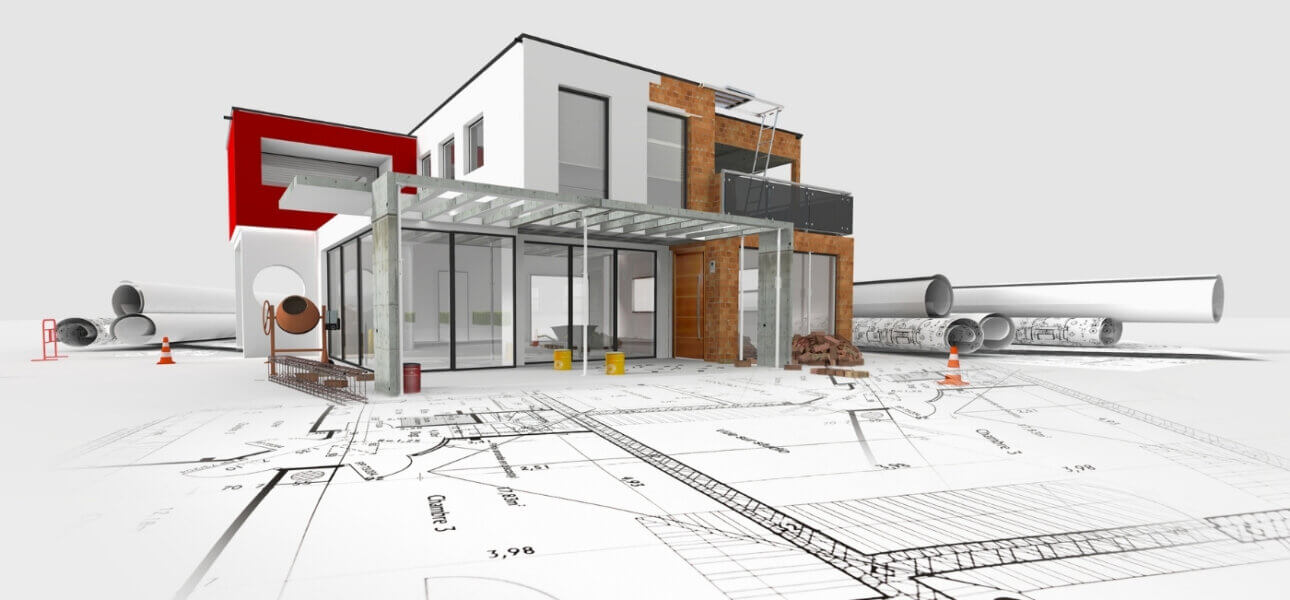Buying a villa plot today and building a home that still feels modern ten years later is all about the electrical plan. With EV charging becoming common and rooftop solar almost standard in Chennai’s climate, future-proofing your wiring, panels, and spaces will save money and headaches. This guide breaks the work into simple steps that suit typical plot sizes at Padappai and the Oragadam belt, with clear notes you can share with your electrician.

Why Future-Proofing Matters For Chennai Homes
Power usage is rising with air conditioners, water heaters, induction stoves, and now EV chargers. Voltage fluctuations during peak hours can stress appliances. A thought-through layout gives you spare capacity, stable power for sensitive devices, and an easy path to add EV chargers and solar in phases without breaking walls later.
Plan Backwards From Your Lifestyle
Start by listing what you will use in the next five years.
- One or two cars that may switch to EV
- Work from home needs like desktop, Wi-Fi, and backup
- Kitchen appliances such as oven, dishwasher, mixer, and induction
- Climate control needs such as split ACs or central AC
- Outdoor needs such as garden lighting, security cameras, and a borewell pump
- Solar rooftop plan with battery option later
This simple list helps you size the main panel, choose single phase or three phase, and mark dedicated circuits.
Single Phase Or Three Phase For EV And Solar
For most 2 or 3 bedroom houses, a well-designed single phase can work. But if you plan for a 7.4 kW EV charger and multiple ACs, three phase gives comfort and balance.
- Single phase works well for basic home loads and a 3.3 kW to 7.4 kW wall box if other heavy loads are not used at the same time
- Three phase gives smoother voltage, supports 11 kW chargers, and simplifies future battery storage and larger solar arrays
Discuss with your electrician and apply for the right sanction load. Keep provision for an easy upgrade path rather than redoing cabling later.
Main Panel And Sub Distribution Boards
A neat, labelled panel saves time and keeps you safe. Use a main panel near the entry with space for expansions and a clear cable route from the gate side to the rooftop.
- Main incomer with isolator and surge protection device
- Residual current circuit breakers for all power and wet areas
- Individual miniature circuit breakers for each heavy appliance
- Separate sub boards for kitchen, bedrooms, and outdoor
- A dedicated EV charger MCB with wiring sized for the final charger you intend to install
Leave 25 to 30 percent free slots in each board for future additions such as a second EV charger or a heat pump water heater.
Conduits And Cable Trays That Age Well
Conduit planning is where future-proofing actually happens. Oversize now to avoid masonry later.
- Run a direct, straight conduit from the gate parking area to the main panel for the EV circuit
- Provide a rooftop vertical conduit from the panel to the terrace for solar DC and AC lines
- Use separate conduits for data, CCTV, and doorbell to avoid interference
- Keep gentle bends and minimal junctions so you can pull new cables later
- Mark a spare conduit from the living room TV wall to the router location for fibre changes
Use high quality copper cables, correct gauge for each circuit, and ferrules for labelling. Protect outdoor runs with UV resistant conduits.
EV Charging Point Design For Car Porch
In Padappai and Oragadam, covered car porches are standard. Place the charging point where the cable easily reaches the car’s port without crossing walkways.
- Mount height at about chest level for comfort and ventilation
- A weatherproof isolator next to the charger for quick service
- A drip loop and away from direct rain splash
- If planning two cars, leave space and a second conduit now even if you install the second charger later
- Consider a small shelf for charger app gateway or Wi-Fi repeater so the charger stays connected
If you expect frequent overnight charging, plan a motion light and a small fan for the porch. It improves safety and comfort.
Rooftop Solar Readiness
Chennai sun gives reliable generation. Even if you are not installing panels on day one, make the roof ready.
- Provide a clear, shade free rectangle on the south or west facing roof
- Cast a short parapet with maintenance walkway and panel access
- Leave a waterproofed conduit for DC cables to the inverter location near the panel
- Reserve a wall area for inverter and optional battery with ventilation and no direct sunlight
- Keep earthing pits and a dedicated lightning protection plan with down conductors
When you add solar later, you will avoid core drilling and messy cable runs. For net feed in or net billing, your electrician can handle the metering process. Always check the latest process with the local office before installation.
Earthing, Surge And Lightning Protection
In the Oragadam belt, thunderstorms and grid switching can cause spikes. Good protection is a must.
- Provide separate earth pits for general earthing and for lightning
- Use proper earth bus bars and keep earth resistance within recommended levels
- Install a Type 1 surge protection device at incomer if lightning risk is high, and Type 2 at sub boards
- Bond metallic gates, solar frames, and outdoor structures to earth
These steps safeguard your charger, inverter, appliances, and smart devices.
Smart Home And Energy Monitoring
Once you plan for EV and solar, tracking energy becomes useful.
- A smart energy meter or clamp sensor shows real time usage and solar generation
- Smart plugs for fridge and deep freezer help monitor power and alerts
- A Wi-Fi enabled inverter lets you schedule heavy loads when solar is producing
- A second tariff or time of day settings may be available in future and smart relays can take advantage automatically
Place your router centrally and run data conduits to the inverter and charger locations for stable connectivity.
Backup And Battery Options
Grid outages are less frequent but do happen. You can start with a basic UPS for Wi-Fi and lights and later add a hybrid inverter and battery if required.
- Separate a small essential load circuit such as study room, router, one bedroom fan and lights, kitchen light, and gate motor
- Keep a manual bypass and labels for quick maintenance
- If you already plan a solar inverter, choose a hybrid model so batteries can be added later without change
This approach avoids a full genset for most urban homes and keeps noise and fuel costs away.
Room By Room Checklist
Kitchen
- Two 16 A points for oven or microwave and dishwasher
- Separate circuit for refrigerator
- Under counter conduit for future water purifier or instant heater
- Provision for chimney and a switch next to the hob
Living And Bedrooms
- Split AC points with outdoor unit drainage and isolators
- TV wall with conduit to router and attic for clean cable management
- Four way switch near the door with fan regulator and night lamp point
- Bedside charging, one on each side, with spare conduit for smart switches later
Bathrooms
- Geyser point with MCB and proper earth
- Exhaust fan and mirror light with separate switch
- Keep fixtures away from shower spray
Outdoor
- Garden lighting with low voltage options
- Gate motor point and an outdoor waterproof socket
- CCTV junctions at entrances with spare data conduit
Coordination With Your Builder
Share a marked electrical drawing with switch positions, load list, and panel layout. Ask for as built documentation after completion. This includes cable routes, breaker ratings, earthing values, and photos of concealed conduits before plaster. It is invaluable for future upgrades.
Budgeting Tips For Padappai Plot Owners
Future-proofing costs a little more now but saves many multiples later.
- Oversize conduits and leave spare runs
- Choose a main panel one size bigger than today’s need
- Invest in quality breakers and protection devices
- Keep provisions for three phase even if you start with single phase
- Pre-wire EV and solar paths during construction
You can phase the rest. Start with a weatherproof EV socket and upgrade to a wall box later. Start with a solar ready roof and install panels when you move in. This phased approach suits home builders managing cash flows while planning long term.
How Velammal Garden Helps
A plotted community with well planned roads and set back norms makes parking and charging straightforward. Drive your car in without tight turns and place your charger neatly. Good internal road widths help cable maintenance and safety lighting. To explore plots that fit EV and solar friendly home designs, visit velammalgarden.com and book a site visit. You can also learn about neighbourhood advantages and plan your build with confidence at velammalgarden.com.
Quick Action Plan You Can Share With Your Electrician
- Decide on single phase or three phase based on ACs and EV plan
- Freeze main panel location with 25 percent spare capacity
- Lay a straight conduit from porch to panel and from panel to terrace
- Allocate dedicated circuits for oven, geyser, ACs, and EV charger
- Install RCCB for all circuits and surge protection at incomer
- Create an essential load circuit for future battery backup
- Reserve inverter wall space and earthing pits
- Label everything and save photos of concealed conduits
FAQs
What is the right EV charger size for a typical Chennai home
Most owners choose a 3.3 kW to 7.4 kW wall box for overnight charging. If you expect faster top ups or two EVs, plan for three phase and consider up to 11 kW. Ensure a dedicated circuit with correct cable gauge and RCCB.
Can I start with single phase and upgrade later
Yes, many homes begin with single phase. If you provision conduits, panel space, and an earthing plan today, upgrading to three phase later is a smooth process without breaking walls.
How do I make my roof solar ready without installing panels now
Keep a shade free area, a waterproof conduit from terrace to panel, an inverter wall with ventilation, and earthing. When you are ready, panels and inverter can be added quickly.
Do I need batteries from day one
Not necessary. You can run solar without batteries and add storage later if you want outage protection or better night time usage. A hybrid inverter keeps the door open for future batteries.
How much extra should I budget for future-proofing
As a thumb rule, adding spare conduits, a larger panel, and protection devices may add a small percentage to electrical cost but can save a large rework bill later. Plan it upfront and you will avoid plaster cuts and repainting.
Build once and build right. With a future-ready electrical layout, your home in Padappai will welcome EVs, rooftop solar, and smart living without any hassle.


